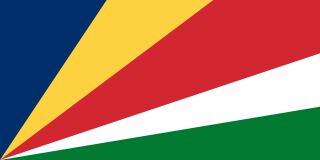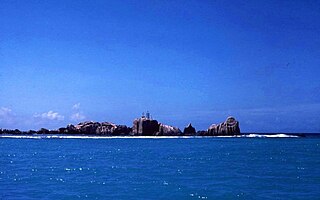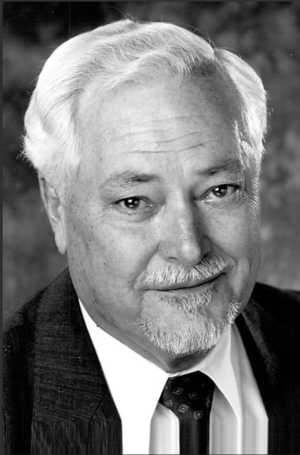 |
|---|
Parliamentary elections were held for the first in the Seychelles in October 1948. [1] The Seychelles Taxpayers and Producers Association (STPA), which primarily represented the interests of large landowners, [2] won all four seats. [3]
 |
|---|
Parliamentary elections were held for the first in the Seychelles in October 1948. [1] The Seychelles Taxpayers and Producers Association (STPA), which primarily represented the interests of large landowners, [2] won all four seats. [3]
Constitutional reforms led to the creation of four elected seats in the 12-member Legislative Council, with the remaining eight seats appointed by the British authorities. [4] However, the right to vote was restricted to citizens over the age of 21 who could write their name, paid income tax on an annual income of SR 3,000 or more, and could prove that they had lived in the Seychelles for at least a year. [2] Only around 10% of the population were able to register. [2]
The four seats were elected from single-member constituencies; Praslin and La Digue, Central Mahé, North Mahé and South Mahé. [5]
Only one of the four seats, Praslin and La Digue were contested, with STPA candidates running unopposed in the Mahé seats. In Praslin and La Digue STPA candidate Gustave de Comarmond was opposed by Arthur Savy, a former tennis professional and member of the Seychelles Progressive Association. [5]
The STPA candidates campaigned on a platform of maintaining Seychellois traditions and customs, claiming they were "100 per cent Seychellois". They also called for a doctor for Anse Royale, a produce-stabilisation fund, better French language teaching in schools and reduced taxes. [5]
Voter turnout in the sole contested seat was 89%. [5]
| Constituency | Elected member | Party |
|---|---|---|
| Central Mahé | Marcel Lemarchand | Seychelles Taxpayers and Producers Association |
| North Mahé | Jean-Baptiste Beauclerc Benoiton | Seychelles Taxpayers and Producers Association |
| Praslin and La Digue | Gustave de Comarmond | Seychelles Taxpayers and Producers Association |
| South Mahé | Alexandre Deltel | Seychelles Taxpayers and Producers Association |
| Source: Scarr | ||

Seychelles, officially the Republic of Seychelles, is an island country and archipelagic state consisting of 115 islands in the Indian Ocean. Its capital and largest city, Victoria, is 1,500 kilometres east of mainland Africa. Nearby island countries and territories include the Comoros, Madagascar, Mauritius, and the French overseas departments of Mayotte and Réunion to the south; and Maldives and the Chagos Archipelago to the east. Seychelles is the smallest country in Africa as well as the least populated sovereign African country, with an estimated population of 100,600 in 2022.

Demographic features of the population of Seychelles include population density, ethnicity, education level, health of the populace, economic status, religious affiliations and other aspects of the population.

Seychelles is a small island country east of the African continent located in the Sea of Zanj due north of Madagascar, with Antsiranana as its nearest foreign city. Seychelles lies between approximately 4ºS and 10ºS and 46ºE and 54ºE. The nation is an archipelago of 155 tropical islands, some granite and some coral. the majority of which are small and uninhabited. The landmass is only 452 km2 (175 sq mi), but the islands are spread wide over an exclusive economic zone of 1,336,559 km2 (516,048 sq mi). About 90 percent of the population of 100,000 live on Mahé, 9 percent on Praslin and La Digue. Around a third of the land area is the island of Mahé and a further third the atoll of Aldabra.

Takamaka is one of the 26 administrative regions of Mahé, Republic of Seychelles. It is located on the southern part of the island of Mahé. Three other districts cover the two other main islands of the Republic, Grand' Anse and Baie Sainte Anne on the island of Praslin and the inner islands district which comprise the 3rd largest island, La Digue. The population of Takamata is estimated at around 3,000.

Praslin is the second largest island (38.5 km2) of the Inner Seychelles, lying 44 km (27 mi) northeast of Mahé. Praslin has a population of around 7,533 people and comprises two administrative districts: Baie Sainte Anne and Grand' Anse. The main settlements are the Baie Ste Anne, Anse Volbert and Grand' Anse.

La Digue is the third most populated island of the Seychelles, and fourth largest by land area, lying east of Praslin and west of Felicite Island. In size, it is the fourth-largest granitic island of Seychelles after Mahé, Praslin, and Silhouette Island. It has a population of 2,800 people. Most of the inhabitants live in the west coast villages of La Passe and Anse Réunion. There is no airport on La Digue, so to get there from a foreign country, one must fly to Victoria and continue by ferry, usually via Praslin. It has an area of 10.08 km2, making it relatively easy to travel by bike or on foot.

Seychelles is divided into 26 districts. All but one are located on the Inner Islands; the Outer Islands make up the most recent district. Eight districts make up Greater Victoria, 14 make up the rural part of the main island of Mahé, two make up Praslin, and one makes up La Digue.
Indo-Seychellois are inhabitants of Seychelles with Indian heritage. With about 10,000 Indo-Seychellois in a total Seychellois population of nearly 100,000, they constitute a minority ethnic group in Seychelles.
Lazare Picault was a French explorer known for his exploration of islands in the Seychelles. Although Arab, Portuguese and British sailors visited the Seychelles prior to Picault, he was the first to do any extensive exploration.

Phoenicophorium, the thief palm, is a monotypic genus of flowering plant in the family Arecaceae. The sole species is Phoenicophorium borsigianum.

Tourism is the most important nongovernment sector of Seychelles' economy. About 15 percent of the formal work force is directly employed in tourism, and employment in construction, banking, transportation, and other activities is closely tied to the tourist industry. Tourists enjoy the Seychelles' coral beaches and opportunities for water sports. Wildlife in the archipelago is also a major attraction.
Articles related to Seychelles include:

The history of Seychelles dates back to the fourth of the Portuguese India Armadas led by Vasco da Gama, though Seychelles was likely already known to Arab navigators and other sailors for many centuries. On 15 March 1503, the scrivener Thomé Lopes noted the sighting of an elevated island, doubtless one of the granitic islands and almost certainly Silhouette Island. The first recorded landing was by the men of the English East India Company ship Ascension, which arrived in Seychelles in January 1609.The islands were claimed by France in 1756. Seychelles remained uninhabited until the first settlers arrived on board the ship Thélemaque, which arrived on 27 August 1770. Captain Leblanc Lecore landed the first colonists, comprising 15 white men, eight Africans and five Indians. The Seychellois Creole language developed as a means of communication between the different races. The British frigate Orpheus commanded by Captain Henry Newcome arrived at Mahé on 16 May 1794. Terms of capitulation were drawn up and the next day Seychelles was surrendered to Britain. Following the fall of Mauritius to British forces, Captain Phillip Beaver of the Nisus arrived at Mahé on 23 April 1811 and took possession of Seychelles as a permanent colony of Britain. The Seychelles became an independent republic in 1976. Following a coup d'état, a socialist one-party state ruled the country from 1977 to 1993. The subsequent democratic Presidential elections were won by candidates of the same party.

Parliamentary elections were held in the Seychelles in June 1957. The Seychelles Taxpayers and Producers Association (STPA) won three of the four seats.

Alexia Amesbury is a Seychellois politician and a lawyer by profession. Under the umbrella of the Seychelles Party for Social Justice and Democracy, she contested in the 2015 presidential election to become the first woman to contest a Seychellois presidential election.

Parliamentary elections were held in Seychelles from 8 to 10 September 2016. Three parties and three independent candidates ran for the 25 directly-elected seats. The result was a victory for the opposition Linyon Demokratik Seselwa alliance, which won 19 of the 33 seats. It was the first time since the 1979 elections that the People's Party did not win a majority of seats.

Dr Jean Désiré MaximeFerrari, KSS, OBE was a politician and former obstetrician who held several different positions in the government of the Seychelles. He was widely regarded as an activist against corrupt governmental practices and a champion of human rights and democracy in the African island nations of the Indian Ocean.

Seychellois nationality law is regulated by the Constitution of Seychelles, as amended; the Citizenship Act, and its revisions; and various international agreements to which the country is a signatory. These laws determine who is, or is eligible to be, a national of Seychelles. The legal means to acquire nationality, formal legal membership in a nation, differ from the domestic relationship of rights and obligations between a national and the nation, known as citizenship. Nationality describes the relationship of an individual to the state under international law, whereas citizenship is the domestic relationship of an individual within the nation. In Britain and thus the Commonwealth of Nations, though the terms are often used synonymously outside of law, they are governed by different statutes and regulated by different authorities. Seychellois nationality is typically obtained under the principal of jus sanguinis, i.e. by birth in Seychelles or abroad to parents with Seychellois nationality. It can be granted to persons with an affiliation to the country, or to a permanent resident who has lived in the country for a given period of time through naturalisation or registration.

The Seychelles Postal Service, is the public operator responsible for postal service in Seychelles.